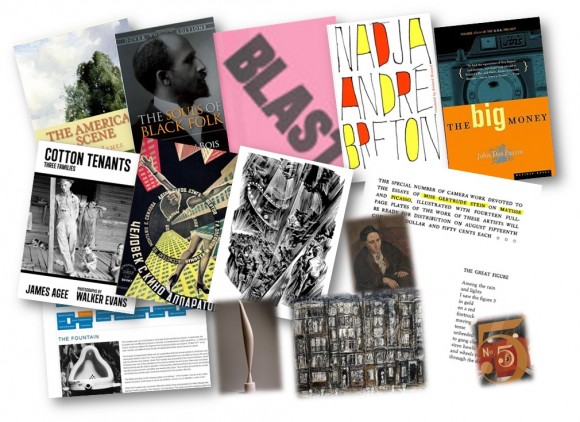Embedded librarianship involves the delivery of highly customized and highly valued information and knowledge services to a customer group with well-defined needs.
— Shumaker (2010)
There are a few agreed upon universals for embedded librarians:
- They establish a relationship with students and faculty in the classroom, or in an online setting, with the librarian becoming an integral part of this community
- They form a bond with students that is deeper than the traditional relationship students have with librarians
- They collaborate with faculty through a semester long partnership.
Embedded librarians, like embedded journalists, go where the action is.
I first dabbled with embedding during the fall 2014 semester, after supporting a colleague with image search strategies in a one-shot instruction session. My curiosity about the class, Seeing + Writing: US Literature and Visual Culture, 1865-1914 , was piqued when I learned that the professor was using the digital image/exhibition platform, Omeka, particularly since I’ve been interested in teaching approaches in a multimodal classroom. My participation in that class was limited to sitting in on a few lessons and providing consultations with students in the library.
The experience inspired me to find a way to spend more time in the classroom, so I asked the professor, Jeff Allred, if I could fully embed in his spring semester graduate level course. This would be my opportunity to deliver customized information services to a group of students with needs aligning to the requirements of the class.
 To prepare for the class, Modernism and the Image, I met with Jeff to review the syllabus and lay some groundwork for my role, and I read up on some of the current literature on embedded librarianship. My responsibilities included teaching image sources, image search strategies, copyright considerations, and training on the use of Omeka. Additionally, Jeff let the students know that I was available outside of class for individual consultations, through email, phone or in person.
To prepare for the class, Modernism and the Image, I met with Jeff to review the syllabus and lay some groundwork for my role, and I read up on some of the current literature on embedded librarianship. My responsibilities included teaching image sources, image search strategies, copyright considerations, and training on the use of Omeka. Additionally, Jeff let the students know that I was available outside of class for individual consultations, through email, phone or in person.
The class blog on WordPress was the main platform for posting the assignments of analyzing weekly readings. Reading through a post for an early assignment, I noted a student’s lament that the reading provided by the professor lacked images that the author mentioned. I located the original source that included the images and handed it to the student in the next class. Here was the chance to be proactive: reading students’ blog posts, I could spot information gaps and step in with comments and links to resources. This generated a richer learning experience, making students aware of the importance of finding information to support their inquiry.
By the end of the semester, I attended all classes and felt that I successfully established a supportive working relationship with students and faculty. A survey I administered yielded a 50% response rate. The results were all positive, with students acknowledging the benefit of having a librarian in the classroom and offering valuable feedback. At a Library Information Literacy Advisory Committee workshop, “Embedding Instruction: A Conversation on Strategies,” I discussed my experience with fellow librarians. Through this discussion, I gained insight into ways to scale my experience and apply it in different types of classes, from English 120 to classes in other disciplines.
References
Daugherty, A. L. & Russo, M. F (Eds.). (2013). Embedded Librarianship: What Every Academic Librarian Should Know. Santa Barbara, CA: Libraries Unlimited, an imprint of ABC-CLIO, LLC.
Hanggi, K. & Valk, A. (2014, Jun 27). Embedded Librarian in the Multimodal Classroom.
Kvenild, C. & Calkins, K. (Eds.) . (2011). Embedded Librarians: Moving Beyond One-Shot Instruction. Chicago, IL: Association of College and Research Libraries.
Shumaker, D. (2010). A wide range of approaches: embedded library models vary in format but share a common focus on delivering customized services to clients with well-defined needs. Information Outlook, 14(1), 10+.
Image credit
Iris Finkel


